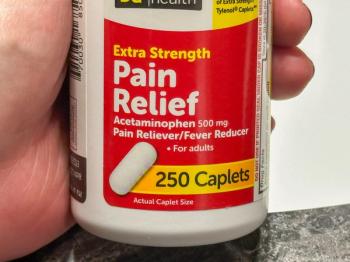
Report Finds Prescription Drug Prices Increased by Average of 4.2% in 2017
The new report found that widely used prescription drugs increased by an average of 4.2% in 2017, double the general inflation rate of 2.1%.
The American Association of Retired People (AARP) has found that widely used prescription drugs increased by an average of 4.2% in 2017, double the general inflation rate of 2.1%. The data was released in AARP's latest report in their Rx Watchdog series, which has been tracking prescription drug price changes since 2004.1
In 2017, the report said, the average annual retail cost for 754 brand name, generic, and specialty prescription drugs was almost $20,000 annually—nearly 20% higher than the average Social Security retirement benefit of $16,848. This cost was also more than 75% of the median income for Medicare beneficiaries ($26,200), and almost 33% of the median US household income ($60,336).
In 2017, the report said, the average annual cost of therapy for widely used brand name drugs increased by an average of 8.4% to $6,798, and the cost for specialty drugs increased by an average of 7% to $78,871. While the average cost for widely used generic drugs was $365 annually and had decreased by an average of 9.3%, this difference failed to offset the rise in prices for brand name and specialty drug products.2
“This is a huge issue for our members,” said the report's co-author Leigh Purvis, Director of Health Services Research for AARP.
She also noted that AARP members are on an average of 4-5 prescription drugs per month, but typically don’t have the financial ability to keep up with the increasing prices. The report noted that if the trends continue, older Americans will not be able to afford the drugs they need.
Drug price increases affect everyone, however, including employers, private insurers, and taxpayers who fund programs such as Medicare and Medicaid. Rising costs can lead to medication nonadherence for patients and challenges for pharmacists to source affordable alternatives for consumers, for example.
Purvis said AARP is tackling the issue in several ways, including through legislation at the state and federal levels. Possible solutions, she said, include encouraging generic drug competition and supporting legislation for drug importation options.
Regardless of how the issue is approached or resolved, Purvis said it should be of great concern to all Americans.
“Of course the reason we’re in this business is for our members,” she said, “but this is an issue that affects all Americans.”
REFERENCES
- Purvis, L., and Schondelmeyer S.W. Rx PriceWatch Reports. Washington, DC: AARP Public Policy Institute, September 2019. https://www.aarp.org/content/dam/aarp/ppi/2019/09/price-growth-for-brand-name-and-specialty-drugs-more-than-offset-price-decreases-for-generic-drugs.doi.10.26419-2Fppi.00073.004.pdf.
- Purvis L., and Schondelmeyer S.W. Rx PriceWatch Reports. Washington, DC: AARP Public Policy Institute, June 2019. https://doi.org/10.26419/ppi.00073.000
Newsletter
Stay informed on drug updates, treatment guidelines, and pharmacy practice trends—subscribe to Pharmacy Times for weekly clinical insights.














































































































































































































